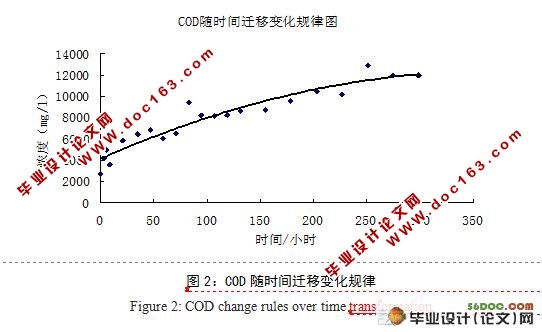清粪方式对养猪废水中污染物迁移转化的影响研究

清粪方式对养猪废水中污染物迁移转化的影响研究(6400字)
摘 要:畜禽养殖成为当今水环境的主要污染源,不同的清粪方式对水污染程度差别很大,本实验通过对不同清粪方式水污染物产生负荷进行研究,研究表明:水冲粪后COD(Chemical Oxygen Demand,化学需氧量)和TP(Total Phosphorus,总磷)随着时间的推移在水中的浓度不断升高;其中TP经过179小时后达到最大值295mg/l,COD经过251小时后达到最大值12916 mg/l左右;TN(Total Nitrogen,总氮)和NH3-N(Ammonia Nitrogen,氨氮)的浓度先下降后升高,179小时后浓度达到稳定,为1094 mg/l和512 mg/l。水冲粪跟干清粪相比,水冲粪中的NH3-N比干清粪中的升高了62.5%。水冲粪中进入水体的TN的量为总污染负荷的90.87%,TP的量为总污染负荷的87.53%。因此,干清粪工艺中猪粪营养成分损失小,肥料价值高,且水污染物含量低,易于净化处理,是目前比较理想的清粪工艺。
关键词:养猪清粪方式;COD;氨氮;总磷;迁移转化
Research on the effection of ways for clearing pig manure on the transformation of pollutant in wastewater
Abstract: The poultry breeds into now the water environment primary pollution source, the different clear excrement way adding water pollution degree difference is very big, this experiment through has the load to the different clear excrement way water pollutant to conduct the research, the research shows that: After water rushed dung, COD and TP elevate unceasingly with the lapse of time in the water density; And TP passes through 179 hours later maximizing 295mg/l, COD passes through 251 hours later about maximizing 12916 mg/l; After TN and the NH3-N density drops first elevates, 179 hours later the density achieves stably, is 1094 mg/l and 512 mg/l. Water rushed dung, compared with dry qing dung washed dung than the NH3 - N the increased dry qing dung 62.5%.In Water rushed dung the water body the TN quantity for the total pollution load 90.87%, TP quantity for the total pollution load 87.53%. Therefore, in the process of dry qing dung ,the pig excrement nutrient content loss to be small, the manurial value is high, and the water pollution content is low, the easy cleaning treatment, is at present the quite ideal clear excrement craft. [资料来源:www.doc163.com]
Key words: Pig qing dung mode;COD; Ammonia nitrogen; The total phosphorus; Transformation
[版权所有:http://DOC163.com]

目 录
摘 要 2
关键词 2
1. 前言 3
2.材料与方法 4
2.1试验条件 4
2.2供试材料 5
2.3试验设计 5
2.3.1干清粪工艺 5
2.3.2 水冲粪工艺 5
2.4测定方法 6
3.结果与分析 6
3.1 水冲粪中TP的迁移变化规律 6
3.2水冲粪中COD的迁移变化规律 7
3.3 水冲粪中NH3-N和TN的迁移变化规律 7
3.4干清粪尿液中的污染物与水冲粪污染物的比较 8
4.结论 9
参考文献 9
致 谢 11
[资料来源:Doc163.com]
